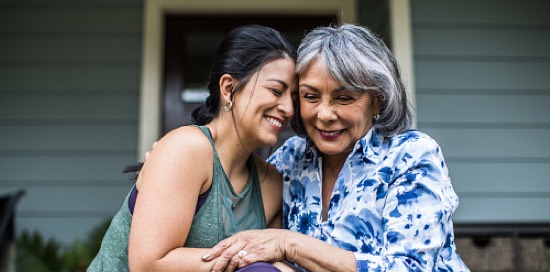Early detection of cancer increases the chances of effective treatment.
Each year, 1.7 million people receive a cancer diagnosis. As the second leading cause of death in the U.S., 600,000 people die each year from cancer.
One in three people will have cancer in their lifetime. It is life-altering for patients, and it also impacts family members, friends and coworkers. The fight against cancer requires community resources and support, as well as heightened awareness and prevention efforts. Efforts to decrease the risks of getting cancer or to detect it early can help lower the impact on the community as a whole.
Many kinds of cancer can, however, be prevented or caught early. Leading risk factors include smoking, excessive ultraviolet (UV) radiation from the sun or tanning beds, being overweight or having obesity, and drinking too much alcohol. You can reduce your risks by making healthy choices. It is also important to follow recommended screening guidelines, which can help detect certain cancers early. In addition, Yuma Regional offers genetic cancer screenings for individuals who meet the criteria and have a family history of the disease.
Schedule a
Mammogram Today!
A mammogram is the most reliable way to find breast cancer early.
Recommended Cancer Screenings
Screening tests are used to find cancer in people with no symptoms. Regular screenings give you the best chance of finding cancer early when it’s small before it has spread and when treatment is most effective. Below is a list of recommended cancer screenings for adults to use as a guide.

Male Adults
All Ages:
- Skin cancer: Monitor moles and discuss changes with your doctor.
After 45:
- Colorectal cancer: Starting at age 45, explore your screening options.
- Lung cancer: If you are at least 50 years old and a current or former smoker, ask your doctor about available lung cancer screenings.
- Prostate cancer: When you turn 45, talk to your doctor about the need for PSA testing.
Lung cancer is the second most common cancer in men and women in the United States. Take a free online risk assessment, and discover any potential risks for lung cancer.

Female Adults
All Ages:
- Breast cancer: Understand how your breasts normally look and feel and discuss changes with your doctor.
- Skin cancer: Monitor moles and discuss changes with your doctor.
Age 19 – 39:
- Cervical cancer: Starting at age 21, you may need regular Pap smears. At age 30, continue regular pap smears and discuss HPV testing with your doctor.
Age 40 – 64:
- Breast cancer: At age 40, begin exploring options for regular mammograms.
- Cervical cancer: Continue regular Pap smears.
- Colorectal cancer: Starting at age 45, explore your screening options.
- Lung cancer: If you are at least 50 years old and a current or former smoker, ask your doctor about available lung cancer screenings.